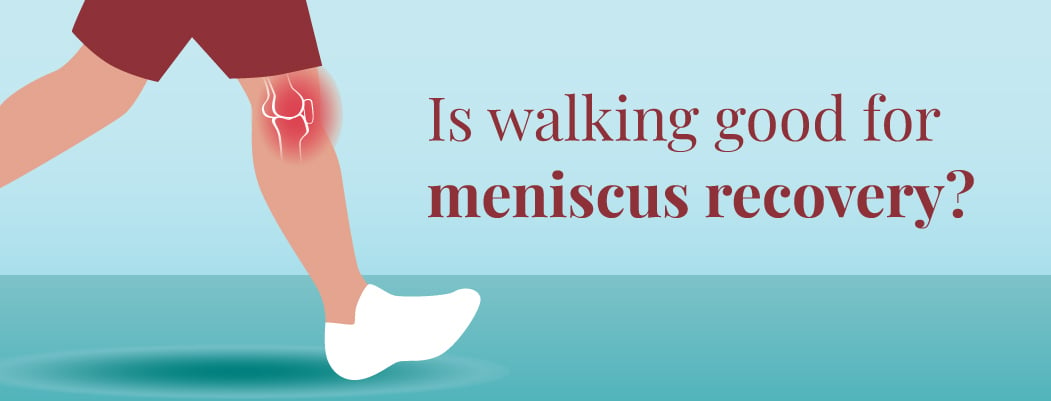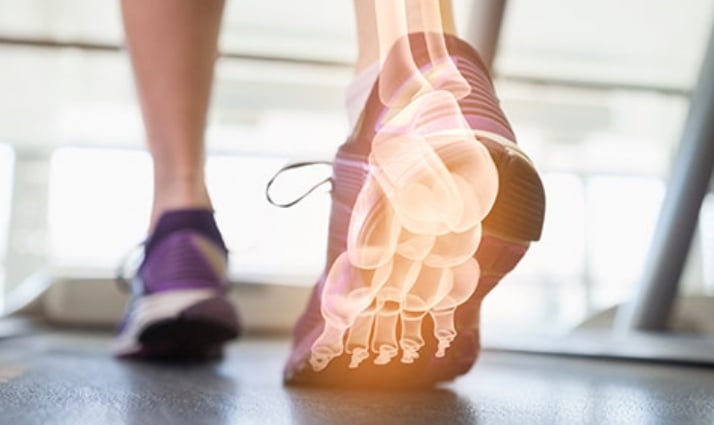Meniscus Tear: Types, Symptoms, Causes, and Treatments
March 25, 2025

A meniscus tear (Torn Meniscus) occurs when the tough cartilage inside the knee gets damaged. The meniscus consists of two rubbery wedges of cartilage positioned between the thighbone (femur) and shinbone (tibia). This tear acts as a shock absorber, cushioning the knee and protecting the bones. Knee rotation or a sudden twist causes it to tear. Meniscus tears often involve sudden twisting motions, excessive knee strain, or direct impact during physical activities.
As people age, knee cartilage naturally weakens and becomes thinner, making it more prone to tearing. Arthritis, which wears down joint cartilage, can also contribute to meniscus tears. This injury is common in athletes and frequently affects teenagers and children who participate in sports. A meniscus tear can be painful and crippling, like many knee ailments. But, unfortunately, that happens frequently. A meniscal tear is one of the knee’s most common cartilage injuries.
Types
Each knee joint contains two menisci:
- Medial meniscus: A tear in this cartilage affects the inner side of the knee
- Lateral meniscus: A tear in this cartilage affects the outer side of the knee
Causes
Meniscus tears often occur in younger individuals who play basketball or football due to sudden knee twisting. In older adults, the menisci gradually weaken over time, making them more prone to tears from minor movements, such as an awkward turn while standing up.
Any activity that forces the knee to twist or rotate forcefully, such as aggressive pivoting, sudden stops, or quick turns, can lead to a torn meniscus. Even actions like kneeling, deep squatting, or lifting heavy objects can sometimes cause this injury.
Degenerative changes in the knee can weaken the meniscus in older adults, making it susceptible to tearing with little or no trauma.
Signs and Symptoms
You might hear popping sounds around your knee joint if your meniscus tears. After that, you might feel:
- Knee pain, especially when touched.
- Swelling or stiffness.
- Pain that worsens when twisting or rotating the knee.
- Difficulty fully straightening the knee.
- A sensation of the knee locking in place when attempting to move it.
- A feeling of instability, as if the knee might give way.
The sensation that your knee gives way, or the sense that your knee cannot sustain itself. Additionally, you can feel a cracking or slipping feeling, typically a sign that a piece of loose cartilage obstructs the knee joint. If any of these symptoms last longer than a few days or appear after you’ve hurt your knee, speak to your doctor immediately.
Complications from a Damaged Meniscus
Your knee won’t be as stable as it was before the injury if the meniscus in your knee doesn’t mend properly. As a result, your risk of suffering further knee injuries, such as an ACL tear or other torn ligaments, may rise.
Diagnosis
Your healthcare professional will physically inspect your knee and look for any swelling. Then, they’ll measure how far you can move. To determine the extent of the injury, you might also undergo imaging tests like X-rays or an MRI.
Your doctor might advise knee arthroscopy for a more thorough examination and correct diagnosis of your ailment. In this operation, the doctor makes a tiny incision in your knee and inserts an arthroscope, a miniature camera.
Treatment
Depending on size and location, your meniscus tear may heal without surgery. However, you should also follow the RICE procedure on the days following your injury. Rest, ice, compression, and elevation are referred to as RICE.
- Rest: Try to avoid putting any weight on the affected knee.
- Ice: Apply an ice pack to your knee several times a day for about 20 minutes.
- Compression: To reduce swelling, wrap a compression bandage around your knee.
- Elevation: Rest with one leg raised higher than the other to reduce swelling.
Alternative Treatment Options
- Medication: Taking over-the-counter or prescription pain relievers, such as NSAIDs (ibuprofen or naproxen), can help reduce pain and inflammation.
- Physical Therapy: A well-structured rehabilitation program improves knee strength, flexibility, and stability, promoting recovery and a safe return to activity.
- Activity Modification: Limiting activities that put strain on the knee, such as twisting, rotating, or pivoting, helps prevent further injury and supports healing.
- Surgical Treatment Options:
- Arthroscopy: A minimally invasive procedure where surgeons assess the knee joint and either repair or trim the torn meniscus.
- Meniscectomy: The damaged portion of the meniscus may be removed (partial meniscectomy), or in severe cases, the entire meniscus may be taken out (total meniscectomy).
- Meniscus Repair: When a tear occurs in the outer meniscus, surgeons can stitch the tissue together since this area has a better blood supply.
- Meniscus Transplantation: In rare cases, a donor meniscus replaces a severely damaged one to restore knee function.
Is Surgery Always Necessary for a Damaged Meniscus?
More severe torn meniscus might not recover on its own. Therefore, your doctor might suggest arthroscopic surgery if RICE and physical therapy are ineffective at treating your injury. A torn meniscus can be effectively repaired with surgery. Your surgeon might remove all or part of the meniscus if the tear is too large to be repaired. Your knee will be more secure after healing, decreasing the likelihood that you’ll experience further knee issues.
Guidelines for Avoiding Meniscus Tears
- By routinely engaging in leg-strengthening activities, you can prevent meniscus tears and stabilize your knee joint, keeping it safe from harm.
- You can wear protective equipment or a brace to support your knee during sports or other activities that could raise your risk of injury.
- Always utilise good form when exercising or performing other activities that could pressure your knee joint.
- Before working out, warm up and stretch. Wear appropriate attire, such as athletic shoes made for the activity.
- Learn the right procedures for your activities by properly lacing your shoes.
When Should I Make a Doctor’s Appointment?
It is advisable to seek medical assistance if you experience any of the following conditions.
- Knee pain prevents you from fully bending or straightening your knee.
- If the swelling continues after a few days, RICE cannot relieve it.
- Feel as if your knee is about to give way or has locked up.
- What inquiries ought I to make of my physician?
Your doctor may refer you to a specialist in bone and joint surgery or sports medicine, depending on the seriousness of your injury.
Your doctor or physical therapist could concur that you can resume some exercises and impact activities once your knee has healed. This might happen after you gain strength and master decent knee control during functional exercises. You shouldn’t be hurting when performing daily tasks at this stage. Start gradually and increase activity while keeping an eye on any discomfort or swelling in your knee. You should start slowly and build up while monitoring for discomfort and swelling in your knee.
Frequently Asked Questions
1. Can meniscus tears heal on their own?
Yes, for some people, a meniscus tear will heal on its own over time. However, different types of meniscus tears exist; some do not heal without treatment. If a tear occurs in the outer third of the meniscus, it may heal naturally or require surgical intervention.
2. How long does a meniscus tear take to heal?
The recovery time for a meniscus tear differs based on the type of tear, the chosen treatment, and the body’s healing capacity. If treated without surgery, recovery typically takes around 6 to 8 weeks. However, if symptoms persist for over three months or become severe, a doctor may recommend surgery to repair the damage.
3. Is it Safe to Walk on a Torn Meniscus?
It is often safe to walk around with a torn meniscus. Walking is less likely to produce pain and discomfort than twisting or squatting activities. However, if you discover walking hurts because of a torn meniscus, try resting your knee instead. Your injuries may recover quickly if you follow your doctor’s treatment recommendations.







